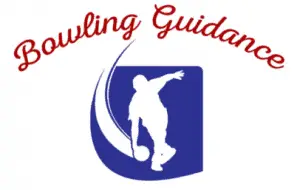
Do you understand how impactful RG and differential are when it comes to bowling? Indeed, there is a lot of physics involved. But once you become an avid bowler, throwing your bowling ball on the right spot at a certain angle is no longer enough. You gotta learn every single move of your bowling ball and the reason behind it. Hence, knowing about RG and Differential is extremely important no matter how complicated it seems. So buckle up folks, we are gonna learn about some really interesting facts about bowling balls, especially what is RG and Differential in bowling!
What is RG in bowling?
Is RG an abbreviation? Well, yes. It stands for Radius of Gyration of a bowling ball. The USBC defines RG as a measurement. It is the distance from the axis of rotation where the bowling ball’s total mass is concentrated without changing its moment of inertia. We all know that every bowling ball has a weight block inside. The RG of a bowling ball indicates when the core will start to rev up. Therefore, you can say the RG of a particular bowling ball is the account of the location of that mass inside (the core).
The end over end axis of a bowling ball is the High RG plane, and the spiral axis of the ball is its Low RG plane. So, simply put, the difference between these two axis RG values represents the Differential. In other words, “The Differential of RG is the difference between the maximum and minimum Radius of Gyration”, according to USBC. The RG and differential of a certain bowling ball indicate its track flare potential. So the differential is the driving force for causing track flare.
What is RG value?
The RG of a bowling ball is measured in inches. As per the USBC requirements, “A bowling ball has to have a low RG no shorter than 2.46 inches and the high RG can be no longer than 2.8 inches”. Different manufacturers often come up with their own RG values that create more confusion. Therefore, following the standard RG numerical values is the best way to understand it and your ball’s flare potential.
The RG values are categorized into three relative spreads:
Low RG: 2.460” – 2.570”
Medium RG: 2.570” – 2.680”
High RG: 2.680” – 2.800”
The High RG numbers (2.680” – 2.800”) stipulate that a bowling ball’s mass is distributed more towards the cover instead of the center. A ball with a high RG is cover heavy and it stimulates more length through the front end of the lane.
The Low RG numbers (2.460” – 2.570”) indicate the fact that a bowling ball’s mass is distributed more towards the center than towards the cover. A ball with low RG is generally center heavy, meaning it is more prone to deliver an earlier roll through the front part of the bowling lane.
The Medium RG numbers (2.570” – 2.680”) describe that a bowling ball has sufficient skid length of overall motion. When a ball has enough skid length it reaches the mid-lane before it transitions into the hook phase at the breakpoint.
Shannon O’Keefe Video: Understanding Radius of Gyration
How RG and Differential affect your Bowling?
When you’re about to purchase a bowling ball, it’s very important to check the specs carefully. When you do that, don’t forget to check the RG and Differential of the bowling ball as it impacts your bowling performance big time. As mentioned, a Low RG ball revs up pretty quickly on the lane. A Medium RG bowling ball revs up slightly later than a low RG ball. And lastly, a High RG bowling ball travels down the bowling lane saving the energy and revs up until later.
We have also mentioned that differential acts as an indicator of the flare potential of a bowling ball. Differential ranges between 0.000” and 0.060”. A low value indicates lower flare potential, and higher value denotes a higher flare potential. The more flare you will find in a ball, the more the cover will touch the surface of the lane. With more a ball touching the lane surface, the sooner your ball will hook. Balls with lower flare will touch the lane surface comparatively less. So instead of an earlier hook, a low flare ball will give you more length as the ball rolls over the same part of the ball’s cover surface. More surface equals more friction, and less surface means less friction, promoting more length on the lane.
Lower Flare Potential: 000” – 0.025”
Medium Flare Potential: 0.026” – 0.046”
Higher Flare Potential: 0.047” – 0.060”
Differentials denote the versatility of bowling balls. Bowling balls that have lower differentials tend to be more stable due to their less generation of track flare potential. Oppositely, balls with higher differentials generate larger flare potential, making a bowling ball unstable.
The reason it differential is so important in terms of the bowling ball’s performance is that you can tell how much length adjustment is needed before you drill your bowling ball. Balls with Lower differential only modest length adjustments. On the other hand, higher differential balls may allow length adjustments 5-times more than low differential balls.
Conclusion
That’s all folks! These are everything you need to know about Radius of Gyration and differential in bowling. Learning about RG and Differential is essential, especially if you’re planning to acknowledge even the minor reasons behind a bowling ball’s movement. We hope this article was informative enough for you to know what you were looking for. Good luck!

